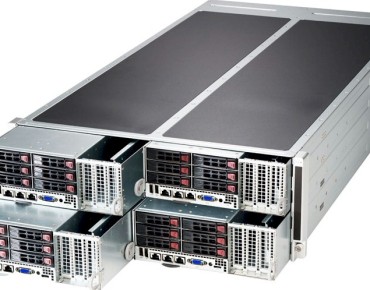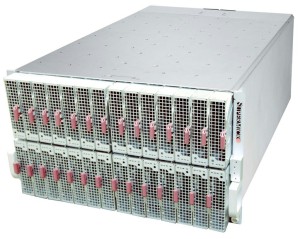Xeon Refresh and Engineering Drive Sales at Supermicro

Supermicro makes a living peddling motherboards and system components as well as its own whitebox systems to those who are looking for density and low cost. Like its peers, the company has been looking forward to the sales bump that from Intel's launch of the "Ivy Bridge-EP" Xeon E5-2600 v2 processors in early September.
According to the latest financial report from Supermicro, which is for its first quarter of its fiscal 2014 year ended in September, the server side of the Super Micro house indeed saw a spike in sales, but its system component business is relatively flat.
In the quarter, overall revenues at Supermicro rose 14.2 percent to $309 million, and thanks to some cost cutting in the back office and the increase in revenues, the company's net income was up by nearly a factor of eight to $11.9 million.
In a conference call with Wall Street analysts, chief financial officer Howard Hideshima said that Supermicro sold over a little over 1 million subsystems and accessories, which accounted for $166 million in revenues in the quarter, up a mere 1.2 percent. The Ivy Bridge Xeon E5-2600 v2 processors plug into the same exact motherboards as the prior generation "Sandy Bridge" Xeon E5-2600 v1 chips, so there was no pent up demand for a new set of motherboards supporting a new socket, as happened when Intel shifted from "Westmere-EP" Xeon 5600 chips to Sandy Bridge Xeon E5 chips in the spring of 2012.
Supermicro sold around 55,000 servers in the first fiscal quarter, about the same as it did in the year-ago period. All systems, including servers, storage arrays, and switches, generated $143 million in revenues. That is a 33.6 percent jump from the year-ago period, and it shows that there was pent-up demand for Supermicro's Fat Twin, MicroCloud, and SuperBlade systems using the Ivy Bridge processors.
The interesting bit here is that the average selling price of Supermicro's servers continues to climb. A year ago, it was around $2,000 per machine, and last quarter it was $2,400 a box. In the first quarter of fiscal 2014, ASPs were up again, to $2,600 per system.
Hyperscale datacenter customers represented 8.3 percent of total sales, or $25.6 million, which is down as a percent of revenue from the same period last year, when it was 8.8 percent of sales. However, Supermicro's overall sales were lower, and hyperscale datacenters only drove $23.8 million in sales. If you do the math, as EnterpriseTech does, Supermicro's hyperscale datacenter business is up 7.6 percent year-on-year, and while that is slower growth than the company overall and slower than the jump in system sales, it is still up in a server market that has been flat or tending down.
Hideshima said that both the MicroCloud "vanity free" microserver line, which can cram up to 24 server nodes into a 3U rack chassis, showed more than 30 percent growth sequentially from the quarter ended in June. And so did SuperBlade and FatTwin systems stuffed with Nvidia Tesla GPU coprocessors or Intel Xeon Phi X86 coprocessors. MicroCloud sales up are 116 percent year-on-year and systems equipped with Xeon Phi or Tesla coprocessors had a 25 percent increase from Q1 fiscal 2013. SuperBlade sales were up 28 percent, and FatTwin multi-node machines (which are aimed at cheapskates in cloud and HPC) had a 176 percent revenue jump from the quarter last year. The latest FatTwin machines, shown in the image at the top of this story, have four two-socket server nodes in a 4U chassis, and each node can have three Tesla GPU or Xeon Phi accelerators.
What these numbers suggest is that customers are not buying as many plain vanilla 1U and 2U rack servers from Supermicro anymore and the substantial amount of engineering that Supermicro has been doing to crank up density with its FatTwin, MicroBlade, and MicroCloud lines is paying off.
Charles Liang, Supermicro's founder and chief executive officer, said on the call that the MicroBlade system announced in conjunction with Intel's "Avoton" eight-core Atom C2000 processor in early September, was starting to ramp. This machine packs 28 blades into a 6U enclosure (two rows of 14 machines), each with four individual Atom processors, for a total of 112 nodes in that chassis.
Looking ahead, Liang said that he expected the Ivy Bridge ramp to get stronger in the coming quarters, but did not provide specific revenue guidance for Ivy Bridge sales. The company does expect for its overall sales to be between $320 million and $350 million in the fiscal second quarter ending in December.











